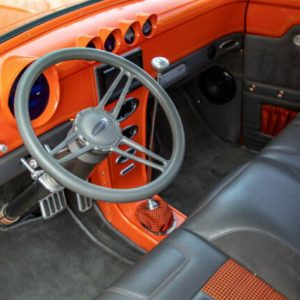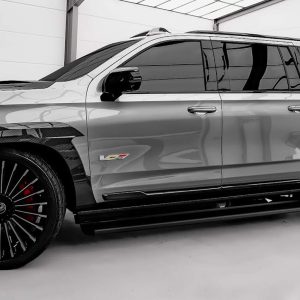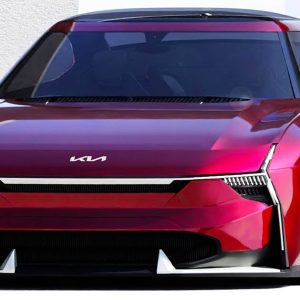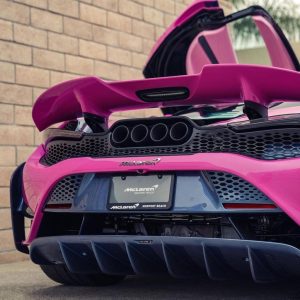
Never miss an issue of Classic & Sports Car and save money when you subscribe! Check out our latest offers
England has a unique tradition with aero-engined cars, a fascination that continues with a passionate group of enthusiasts in the Vintage Sports-Car Club.
Where exactly the attraction of monster powerplants in pre-Great War chassis with limited brakes originates is intriguing, but Brooklands racing and record-breaking were no doubt key developments.
The stories of Count Zborowski and his fabled Chitty Bang Bangs captivated me as a youngster, but during the 1960s the nearest such machine in England was the 21-litre Métallurgique owned by Douglas Fitzpatrick.

The big ‘six’ engine produces 1000lb ft of torque at 750rpm
On childhood holiday trips to Norfolk, I hoped one day to encounter this magnificent beast on the open road as it blasted past.
The discovery of ‘La Mét’ and its rebuild could have inspired Ian Fleming as much as the Zborowski saga.
I jumped at the chance to visit the present custodians, the Moore family, and fulfil a long-held ambition to go to the pub in the mighty Edwardian special.

‘La Mét’ has been tinkered with throughout its life
The original aviation-style starting procedure with tommy bar and trembler coil has been superceded by a starter motor, but the waking of the huge ‘six’ is still a thrill.
Tim Moore is well respected in veteran circles and, despite his extensive experience with early machines, you can sense that he’s still apprehensive around the Métallurgique.
While I pump up the fuel pressure, he lifts the long bonnet and with a bent wire tickles the twin 2½in SU carburettors.

Owner Tim Moore understands how to drive the Métallurgique-Maybach at speed
With ignition retarded and hand throttle set, the Victorian-style switches under the seat are flicked on and the starter pressed. After a brief clatter, the thunderous beast rumbles into life and the whole car jiggles at tickover.
“As long as she’s regularly used, she starts fine,” says Moore, “but it’s a real challenge when you dig her out after a long rest.”
We clamber aboard and trickle away. The locals are clearly used to Moore appearing in strange machines, and we’re politely waved out.
The original aviation-style starting procedure was replaced by ignition switches and a starter motor
Quickly he changes to second, and the enormous reserves of torque are apparent as the car launches with hardly a whiff of throttle.
Moore deftly double-declutches for the tricky change to third, which requires a U-turn in the gate and, as the road ahead straightens out, it’s swiftly up to top.
The effortless performance is magnificent, and your face is pinned back as if in a wind tunnel.

It’s important to keep an eye on the oil and fuel pressure when out for a drive in the Métallurgique-Maybach
To filter insects, it’s key to grit your teeth, as the Métallurgique rumbles effortlessly past surprised moderns. Occasionally, Moore sounds the Klaxon Mécanique Blériot horn, its gravelly tone causing great amusement.
The performance at low revs is staggering (1000rpm in third is 60mph), but I sense that Moore is always anticipating the movements of other motorists because the limited braking is a constant consideration.
In 1957, John Bolster reported that ‘a splendid fire ensued’ from the drums after a lap of Brands Hatch.
A spare wheel hangs onto the rear of the Métallurgique-Maybach
Moore reads the road in advance, and the engine braking feels more effective than the narrow rear linings.
The steering is hard work at low speed but the worm-and-nut action lightens with pace, and the 50:50 weight balance provides neutral handling with a bias to understeer if foolishly pushed too hard.
The ride is impressive, the long springs (three-quarter elliptics at the rear) and Hartford dampers soaking up even the worst bumps.

This vintage car’s wonderful Klaxon horn will make pedestrians jump
Never have I turned up at a country pub in such style, and thankfully there is plenty of space for the beast – 15ft 8in long and with 1:3 turns lock to lock – to park. One last blast of the horn celebrates our jubilant arrival.
“You have to keep one eye on the oil and fuel pressure,” says Moore. “She’s good for 12mpg and has a range of 200 miles, but you don’t have to watch the water temperature – you soon feel it if she’s boiling.”
Over lunch, Tim’s father Brian relates the history and his experiences of this amazing machine, which has been with the family for 25 years.
The seats are well worn from epic continental adventures
It’s believed that Ernest Eldridge began the Maybach engine conversion but abandoned the project in favour of the Fiat Mephistopheles.
In 1919, the future Land Speed Record holder sold it to a Norfolk-based enthusiast named Cole, who set about completing the swap.
Cole died in 1921, and the Métallurgique, with ugly body and makeshift vee radiator, was abandoned in a barn for the next 30 years.
At 15ft 8in long, tight manoeuvres aren’t the Métallurgique-Maybach’s forte
The car’s life really took off with its discovery by Douglas Fitzpatrick. Born in 1906, he travelled extensively during the 1930s and later served with the RAF, where story has it he trained Douglas Bader.
An early interest in Edwardian monsters was ignited by Brooklands tales related by a friend of his father.
“He vividly remembered that in his young days engines were really engines, not these buzzing machines used nowadays,” recalled Fitzpatrick to writer Bunny Tubbs.
“He said: ‘You could step inside a piston ring of some and draw it up to your waist.’ This idea fascinated my impressionable mind.”
A step helps passengers to climb into the Métallurgique-Maybach’s plush cabin
First-hand experience with Sam Clutton’s 12-litre Grand Prix Itala and Eric Milner’s 22-litre Blitzen Benz sealed his interest: “Propelled by sheer torque instead of the building-up of engine revolutions, there is a fascination in the instantaneous response of the car to the slightest rev increase. I stepped out more sold on monsters than ever.”
After WW2, Fitzpatrick acquired a 1907 3.7-litre Wolseley-Siddeley, but one “never to be forgotten” day in April 1950, the telephone rang at his Norfolk home.
A farmer had just started clearing a newly acquired boatyard at Brundall on the Broads, and discovered a rough old car in the shed: “He knew about my Wolseley and insisted it was something very different.”
The Métallurgique-Maybach’s pedals include two brakes
“My ears pricked up and I immediately drove round to see it, but I wasn’t prepared for the sight that took my eye when he opened the door,” said Fitzpatrick.
“Even Aladdin could not have gone through a greater emotional crisis than I when I saw the monster.”
The ugly body, crude radiator and flat tyres didn’t deter Fitzpatrick – as soon as he lifted the long bonnet, he was hooked: “It was a splendid sight. Six of the largest cylinders I had ever seen.”
A deal was done and a lorry was organised to transport the rusty hulk back to Sheringham Hall, where he lived with Thomas Upcher.
The single rear seat was intended for a mechanic
Fitzpatrick found the letters MM stamped on many components, identifying the chassis as a Belgian 1907 Métallurgique, which would have originally been fitted with a 10-litre ‘four’.
Closer study revealed that the frame had been extended to accommodate the mystery engine.
Measuring 54in long, it featured six separate iron cylinders placed side by side on an enormous aluminium crankcase.
The T-head combustion chambers breathed in on the right and out to the left, with the valves being opened by two low camshafts.
The Métallurgique-Maybach’s exposed cockpit offers little protection from the weather
Each cylinder had three plugs (one reserve) fired by twin Bosch magnetos, but the original carburettors were missing.
Fitzpatrick surmised that the engine was of German origin, and possibly Maybach.
‘They informed me it was a proprietary unit manufactured between 1910-’12 for use in motor-boats and airships,’ he wrote.
Further digging revealed that the chassis was originally commissioned by David Bruce-Brown, an American millionaire who enjoyed racing success before WW1.
Douglas Fitzpatrick (closest) and Gerry Majewski prepare to fire up the Métallurgique-Maybach
As the car was dismantled, Fitzpatrick discovered that the overall condition was good and the workmanship of a high quality.
But the rebuild was delayed due to a broken crownwheel and pinion, so a new one was made with a longer ratio of 1.27:1.
Running on tall beaded-edge tyres, the Métallurgique was geared for 85mph per 1000rpm in top, but stronger American wheels and tyres reduced that to 80mph.
Fitzpatrick claimed to have seen 1400rpm in top, which equalled 120mph! ‘Even in second, it is propelled 8ft forward per explosion,’ he recorded.
There’s impressive performance at low revs, 1000rpm in third is 60mph
The rebuild greatly benefited from Gerry Majewski, a former German PoW who’d worked on a local farm and stayed on to help Fitzpatrick.
The ex-Panzer engineer carried out the chassis rebuild before it was sent to Panelcraft to be rebodied with an Edwardian-style three-seater layout to Fitzpatrick’s design, the third seat mounted over a 10-gallon oil tank for the dry-sump system.
A new flat radiator was fabricated, but thankfully the magnificent original bonnet and scuttle were retained.
The first start-up day arrived one Sunday morning in November 1955, when the Métallurgique was pushed onto Putney High Street with a few VSCC members enlisted to help.
The Métallurgique-Maybach’s fuel pump and passes from various VSCC events
After a tow to the top of Putney Hill, the car was turned around and, with a nervous Fitzpatrick at the wheel, launched off.
He let in the clutch in second, the engine roared into life and the Métallurgique hurled away.
After turning around outside the KLG factory and running up the hill in third gear, a jubilant Fitzpatrick headed home with Majewski trying to catch up in the support car.
It took a year to sort teething problems, the locals becoming used to the sight of this eccentric enthusiast impersonating Mr Toad as La Mét thundered past during testing on the Cromer Road.

The Hartford dampers can soak up the worst bumps that the road has to offer
‘Years before Mrs Castle curbed such excitements in this country,’ wrote Ronald ‘Steady’ Barker, ‘I remember sitting alongside the dashing Mr Fitzpatrick to have my cheeks pressed flat by a 115mph gale as we cut through a deserted stretch of Norfolk. It was one of the great motoring experiences.’
With his ever-loyal German mechanic, Fitzpatrick ventured all over Europe, on occasion going as far south as Athens.
Starting was a well-rehearsed procedure, with Majewski enlisted to turn over the engine with a 4ft tommy bar, while Fitzpatrick intently watched the flywheel to line up the timing marks for top dead centre on number-two piston.
With the bar removed, the mags and trembler coil were switched on, and the engine instantly clattered into life.

“It was a splendid sight, with six of the largest cylinders that I’d ever seen”
Great care has to be taken that the switches are off before turning the engine over, as Majewski discovered in Munich after the car stalled. When the 21-litre unit kicked back, it launched him across the road and into a cyclist.
The Métallurgique was also seen at VSCC speed events, its owner always driving it to and from venues. In fact, it still holds a Class A standing-start 500m record for Over-10-litre Sports Cars.
And when Ken Hughes started production of Chitty Chitty Bang Bang, the racing scenes employed many Edwardian car owners for authenticity.
Fitzpatrick was tempted out and, with wings and rear seat removed, it battled with Steady Barker’s Napier and a group of replicas.
The magnificent Métallurgique-Maybach has a separate four-speed gearbox
Brian Moore met Fitzpatrick on several occasions.
The Métallurgique had always interested him, and after Fitzpatrick’s death in 1986 the famous machine remained at Sheringham Hall until it turned up for auction with Christie’s at Beaulieu in ’88: “We went down to buy it but the car was withdrawn with stories that the crankshaft had broken.
“Rumour had it that a tow start had ended with expensive noises.”
Two years later, the Métallurgique turned up at the same company’s Monaco sale, and Moore secured the car over the phone for £242,486.
‘This incredible machine has a vivid history with intrepid owners who have not been intimidated by its spectacular specification’
The family has always bought cars to enjoy, and set about resolving the engine problems: “Thankfully, the crank wasn’t broken [the estimated cost of making a new one was £20,000], but the rear flange had worked loose. We welded it up and it’s stayed together ever since.”
Following the tradition of Fitzpatrick, the Moores continue to drive the Métallurgique to events.
Highlights have included a run to Germany for an Edwardian demonstration at the Oldtimer Grand Prix. “I remember a photographer asking if he could climb in the back to get some pictures,” says Brian.
“Before the first lap was over, he was already tapping me on the shoulder to let him off.”

The third seat sits atop a 10-gallon oil tank
They have also competed at Mallory Park – “Other than the hairpin, you can drive around in top gear” – and Weston-super-Mare: “Our convoy in the pouring rain on the M4 – with my wife in a Bentley 4½ Litre and Nick Wrigley’s Théophile Schneider – was quite a sight.
“Unfortunately, my passenger wasn’t prepared for the trip. You really need to treat it like a motorcycle. On long runs, we wear a crash helmet for protection as much as for the wind noise.”
There have been many remarkable moments in the history of La Mét, none more so than a guest drive in 1994 for Ken Revis, who had been blinded in 1943 when a mine he was defusing on Brighton Pier exploded.
The Métallurgique-Maybach is a marvellous Edwardian special
“We thought it would cheer him up,” recalls Brian. “He knew how to drive vintage cars, so we organised access to an airfield and I invited him to try the Métallurgique.
“What I didn’t realise was that Ken had also lost his hearing. We got up to about 70mph and the end of the runway was coming up fast.
“I started shouting but there was no response. In the end, I had to step on the brake and haul the steering over! Ken was an amazing character.”
This incredible machine has a vivid history with intrepid owners who have not been intimidated by its spectacular specification. Long may it remain in such enthusiastic hands.
Images: Tony Baker
This was first in our November 2015 magazine; all information was correct at the date of original publication.





